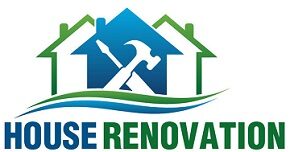Financing has always been the most critical step in real estate investing. For many aspiring investors, the struggle isn’t finding a profitable property—it’s securing the right type of funding. Traditional mortgage systems are often rigid, focusing heavily on personal income, tax returns, and strict debt-to-income ratios. But today’s investors are increasingly turning to a smarter alternative: DSCR loans.
By shifting the focus away from personal income and toward a property’s income potential, DSCR loans empower investors to grow their portfolios in ways traditional lending never could.
What Are DSCR Loans?
DSCR stands for Debt Service Coverage Ratio. This ratio measures a property’s ability to generate enough income to cover its loan obligations.
Formula:
Net Operating Income ÷ Total Debt Obligations
- A DSCR above 1.20 typically means the property is generating sufficient cash flow to cover the mortgage and associated debt.
- A DSCR of 1.0 suggests break-even performance.
- Anything below 1.0 indicates the property isn’t earning enough to cover payments.
This calculation gives lenders confidence that the loan will be repaid from the property’s own revenue, not solely from the borrower’s income.
Why DSCR Loans Are Different
Traditional loans require stacks of paperwork—tax returns, pay stubs, W-2s, employment verification, and more. DSCR loans skip most of that. Instead, lenders primarily want to see rental income history or reliable rent projections.
Key Distinctions:
- Traditional Mortgages → Based on borrower’s income, job history, and DTI.
- DSCR Loans → Based on property’s rental income and expenses.
This makes DSCR loans especially valuable for entrepreneurs, freelancers, or full-time investors who may not fit neatly into conventional lending boxes.
Advantages of DSCR Loans
1. No Personal Income Verification
Borrowers don’t need to show pay stubs or tax returns.
2. Faster Loan Processing
With fewer documents required, approvals are generally quicker.
3. Scalable Portfolio Growth
Because each property is judged on its own, investors can acquire multiple rentals without being capped by personal income.
4. Flexible Loan Terms
Options include 30-year fixed, adjustable-rate, and even interest-only loans for maximizing cash flow.
5. Ideal for Various Property Types
DSCR loans can finance single-family homes, multifamily units, and even short-term rentals like Airbnbs.
Challenges to Keep in Mind
No financing method is perfect. While DSCR loans open many doors, they come with trade-offs:
- Slightly Higher Rates – Usually 1–2% above conventional mortgages.
- Bigger Down Payments – Lenders often require 20–25%.
- Market Risk – If rental demand falls, DSCR could drop below lender thresholds.
Investors should carefully analyze local rental markets before moving forward.
Who Should Consider DSCR Loans?
- Self-Employed Professionals – Who can’t show consistent W-2 income.
- Portfolio Investors – Looking to scale quickly beyond a few properties.
- Short-Term Rental Operators – With strong Airbnb or vacation rental income.
- First-Time Investors – Who want financing focused on the property, not personal earnings.
Example of a DSCR Loan in Action
Suppose an investor finds a four-unit building for $800,000.
- Expected monthly rent: $10,500
- Estimated mortgage: $7,500
- DSCR = $10,500 ÷ $7,500 = 1.40
With a strong DSCR above 1.20, the property qualifies—even if the borrower doesn’t have high personal income. This allows the investor to secure the deal and begin generating passive income.
Tips to Improve DSCR Loan Approval Odds
- Choose Properties with Strong Rental Demand – Look in areas with high occupancy rates.
- Document Rental Income Clearly – Provide leases, rent rolls, or market rental comps.
- Maintain a Good Credit Score – While less critical than income, it still influences rates.
- Keep Reserves – Many lenders require 3–6 months of mortgage payments in reserve.
- Shop Lenders – DSCR loan terms vary widely across institutions.
DSCR Loans vs. Other Investor Financing
- Conventional Loans – Lower rates, but income-based qualification limits investors.
- Hard Money Loans – Fast but expensive; better for flips, not rentals.
- Private Money – Flexible but often comes with unpredictable terms.
- DSCR Loans – Balanced, property-based, long-term financing.
For investors focused on buy-and-hold strategies, DSCR loans often strike the best balance between flexibility and cost.
Why DSCR Loans Are Growing in Popularity
The modern workforce has changed. Many investors are entrepreneurs, self-employed, or pursuing financial independence through real estate. Traditional loan models don’t always align with these paths. DSCR loans fill that gap by aligning financing directly with investment goals.
As demand for rental housing continues to rise, the need for accessible financing solutions like DSCR loans will only grow.
Final Thoughts
For today’s real estate investors, DSCR loans provide a streamlined, property-focused way to secure financing. By evaluating a property’s income potential rather than a borrower’s personal income, they create opportunities that traditional mortgages often block.
Yes, they require higher down payments and slightly higher interest rates—but the flexibility, scalability, and accessibility they provide make them an essential tool for building long-term wealth in real estate.

